|
It is important that insurance claims contractors don't confuse supervisory labor, a direct cost, with your overhead (indirect) costs. Educate the customer on the unique format of insurance claims estimates. Be sure to accurately track your supervisory labor and include those cost breakdowns in your estimate. Indirect Costs For ContractorsXactimate is a common estimating software used as a means of establishing a common language between restoration contractors and insurance claims professionals. According to Xactimate, general overhead (aka indirect costs) are, General Overhead are expenses incurred by a General Contractor, that cannot be attributed to individual projects, and include any and all expenses necessary for the General Contractor to operate their business. Indirect costs are all of those necessary expenses that a contractor incurs but are not directly related to an individual project. If a contractor, or any business, does not account for their overhead expenditures in the costs of their goods and services, they will not be in business for long. Examples of general overhead, according to Xactimate, include but are not limited to:
Xactimate does not include consideration for these indirect or general overhead expenses in their unit pricing. Instead, they advise, that the contractor should add these costs to the estimate, "As a percentage of the total bid along with the appropriate profit margin. These two costs together constitute what is normally referred to in the insurance restoration industry as General Contractor’s O&P, or just O&P." While contractors and carriers have become comfortable with a 20% markup, this amount is not stipulated by the software. Direct Costs for Construction ProjectsSupervision is common, i.e. industry standard, for construction projects. This role is often the responsibility of roles including project managers, site foremen, superintendents, departmental supervisors, safety managers, etc. Supervision is critical to successful project outcomes and is a real cost of the work being performed. Xactimate states that indirect costs or job-related (specific) overhead, Are expenses that can be attributed to a project, but cannot be attributed to a specific task and include any and all necessary expenses to complete the project other than direct materials and labor. Examples (including but not limited to): Project managers, onsite portable offices and restroom facilities, temporary power and fencing, security if needed, etc. Supervisory labor (aka project management time) is as much a real cost that should be accounted for an compensated for the work as temporary power or restroom facilities. It is common to either bid supervisory labor as a percentage of the estimated labor or submitted as a breakdown for billing at project intervals (i.e. bi-monthly).
1 Comment
What is the right price for a home improvement or remodeling project, or for anything? The right price is what a willing buyer will pay a willing seller for their goods and services. It may be helpful to know what your competitors are charging, but the reality is that many contractors DO NOT know how to price things right. Often contractors miss scope elements, undervalue their labor, and don't understand overhead costs or profit goals. How Much Should Remodeling Cost?In the world of insurance claim repairs, a common estimating tool called Xactimate provides standardized pricing based on feedback from various sources. Unit pricing, rate and materials comparisons, national averages and other factors can help a contractor to confirm their pricing strategies. Market "norms" and software programs can be useful benchmarks but they do not account for all of the elements that go into drafting the right price for your services as a contractor. If you are a contractor and you want to sharpen your skills for estimating, check out Jon Isaacson's fourth book and estimating course - How Not To Suck At Estimating: Habits for Better Project Outcomes (Coming Soon). How Much Do Insurance Repairs Cost?Focus on the scope of work, the vision of the customer, and your unique approach to the project. Contractors and consumers should focus on the value exchange between the two parties. To that end, Steven Patrick, of Level the Playing Field, joined us for The DYOJO Podcast Episode 82. He shared an informative story about a plumber that was providing great value to their customers but once their boss told them they were, "Charging more than anyone," their mindset shifted from value to cost and their habits changed. Why Are Contractors So Expensive?Please don't misconstrue the words of this author to encourage anyone to "price-gouge" rather, most contractors should be charging more for their services, especially when they provide the service and quality to match. Most contractors are hesitant to raise their prices or charge what they should be charging to build their businesses (i.e. hire more people, pay their skilled labor more, invest in retirement, provide benefits, etc).
Thursdays are for The DYOJO Podcast - INFOtainment to help you shorten your DANG learning curve. Have you heard the saying, "You can have it good, fast, or cheap, but you have to choose two." While it seems like a good idea to get the best deal when shopping for a kitchen or bathroom remodel, in the current market there is not a shortage of work for quality contractors. If you are consumer and are getting more than 2 or 3 bids, you will probably find that many contractors won't even bid. Consumers and contractors should focus on is value when determining the cost of a remodel project. The Best Price for Home ImprovementThe best price is not the cheapest, the most expensive, or the middle of the pack. Some contractors can do it cheaper than their competitors and do it well. Unfortunately, a contractor that does not know how to properly price their services likely is not covering all of their obligations such as taxes, overhead expenses, and investing in the long term growth of their business. If you are a contractor and doing work for less than market averages as a strategy to get you more work, stop and think for a minute about whether you are profitable.
The Best Bang for Your Buck When RemodelingConsumers and contractors should focus on value. As a contractor, what value are you brining to your clients and are you doing a good job of communicating why your process and pricing unique? As a consumer, you want to find the contractor who fully understands your vision and can best work with your budget. Neither contractors or consumers win when corners are cut in order to cram an unrealistic scope into a underfunded budget.
Unrealistic Expectations for RenovationAs I share in my upcoming book, I think much of the modern consumer mentality is shaped by home improvement shows. What the customer expects is that we can walk through a house in five minutes or less and tell them, “This will cost $1,500 (seems like this is the magic number for everything) and my crew can start this afternoon.” Unfortunately this is not how things work in the real world. If you need to prove this to a client, you can find stories like this one from Fast Company that reveal these shows are selling “fantasy at best and nightmare at worst”. Early feedback from peers in the water damage restoration industry who have read portions of Jon Isaacson's fourth book, How Not To Suck At Estimating: Habits For Better Project Outcomes.
The Target Audience for this book:
This book will also be a course offered through the Restoration Technical Institute (RTI). Keep your eyes open for the release in 2022 and reserve a copy through the webpage for BOOK 4.
How a project starts is critical to set it on the right path to producing a positive customer experience and a profitable conclusion. A contract forms the legal agreement between a willing buyer (the customer) and a willing seller (the contractor). The contract is built upon the foundation laid from a clearly defined agreed-upon scope of work. What is and, as importantly, what is not included in that scope of work is outlined in the contractor’s estimate. Let’s discuss three guiding principles for better project outcomes. Element 1 - The Claims StandardThe Claims Standard is a guiding principle for all members of your team, and it crystallizes the responsibilities of all parties in the insurance claims relationship. Restoring the property to resemble pre-loss conditions, with materials of like kind and quality; no more and no less. Your initial site inspection identifies the affected areas related to the source and extent of the damages.
If everyone on your team understands and continues to frame the project in accordance with The Standard, all parties will have a clearer understanding of the parameters for success. I believe that when you properly implement this simple narrative into your process, from the outset, you can help steer the project lifecycle more consistently to a successful outcome (habit). Setting the expectations at this point in the project sets the team up to execute realistic expectations during production. Element 2- A Simple Estimating FormulaEstimating is the process of establishing the agreed-upon scope and cost for a given project. As contractors, we utilize a simple estimating formula to guide our process: Thorough Data Capture (TDC) + Accurate Data Input (ADI) = A Defensible Estimate (ADE) If you are struggling to produce consistently positive project outcomes, you should review whether your data inputs (estimate) are accurate as well as whether your data capture (documentation) is thorough. You must take accountability for this truth: The quality of the data inputs (composed estimate) is in direct correlation to the quality of the data captured. Everyone on the team should understand the importance of gathering and sharing quality documentation from the worksite. To tie these two elements together, the estimator will do everyone a favor by making the previously mentioned Standard clear at the outset of every claim. Your introduction could be something to the effect of, “My job is to perform thorough data capture of the site conditions so that I can accurately data input to generate an estimate for an agreed-upon scope (most likely through Xactimate) to restore your property to resemble pre-loss conditions.” Many customers choose to upgrade materials or use the damage scenario as a time to finally make those remodeling changes that they have been contemplating for months. Before a restoration contractor can bid the changes to the client, everyone needs to be clear on what is part of the insurance scope so the proper charges are going to the correct parties. Element 3 - The Restoration TriangleThroughout his career, Pete Consigli, The Global Restoration Watchdog, trained restorers to value the Restoration Triangle. Each party brings something unique to the table that should be heard and referenced as the agreed-upon scope is established:
Pete reminds stakeholders, “If one of these parties is left out of the process of determining and agreeing on the extent of damage, scope of repair, cost of restoration to a pre-loss condition, timelines, and criteria for satisfactory completion, then there will be problems.” A claim should not follow the narrative of a T.V. drama or a strategy for Survivor, whereby two members of the triangle team up to push their narrative through. For example, the contractor and client should not be in cahoots to figure out a way to “maximize the claim” without justification. This is fraud. Neither should the contractor and the carrier be working together to dwindle the scope. This is short-changing (and likely grounds for bad faith). Developing Your Estimating ProcessBetter project outcomes start with better project initiation. As an owner or manager, if you want accountability within your systems, you need to ensure your processes are clear and consisstenlty followed. As an estimator, you need to acknowledge your role in setting up your team for success. As a team, everyone has to work together if the process is going to improve. We know there are two primary goals,1) produce a happy customer, hopefully resulting in repeat and referral business (the best kind), and 2) a profitable project so that we can invest in people and growth. My soon-to-be-released fourth book, How Not To Such At Estimating, will also be a course delivered through Restoration Technical Institutes' learning platform. The content is designed to help restoration professionals develop Habits for Better Project Outcomes. I will share at least 3 more elements to add to your estimating toolbag. If you are interested in peer-reviewing a chapter or would like to be considered to win one of 12 FREE copies for aspiring intentional estimators, please contact The DYOJO through the book's landing page. Lisa Lavender, Restoration Technical Institute (RTI) reached out to me about developing a course around the principles in my first book, Be Intentional: Estimating. While this book centers around the mindset and habits for insurance claims estimating success, the course will dig deeper into the technical aspects. The working title for the book and the course is How To Not Suck At Estimating: Habits For Better Project Outcomes. Module/chapters will include Developing The Agreed Upon Scope, The Claims Standard, A Good Sketch Is A Good Start, Don't Play The Blame Game, and more Episode 80 of the The DYOJO Podcast will center around four common estimating approaches including, using drywall repairs as an example:
Our discussion includes appearances by these guests:
THANK YOU TO OUR SPONSORS:
THURSDAYS ARE FOR The DYOJO Podcast We aim to entertain while we inform (INFOtainment), helping you shorten your DANG learning curve. New episodes of The DYOJO Podcast are released on Thursdays via video through YouTube and/or audio is distributed through platforms such as Apple, Spotify, Google, etc. Learn more by visiting our website |
Words
The DYOJO - helping contractors shorten Archives
April 2024
Categories
All
EstimatingMarketingInsurance ClaimsLeadership |
|
| |||||||
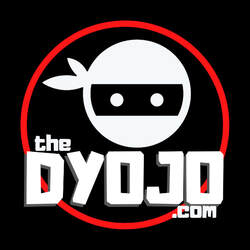

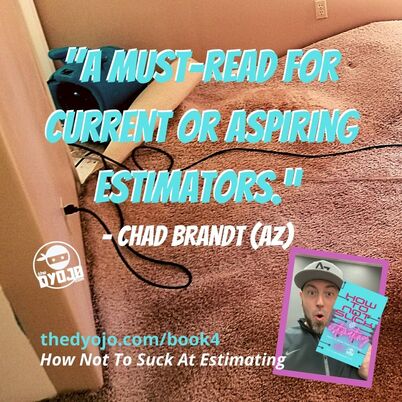
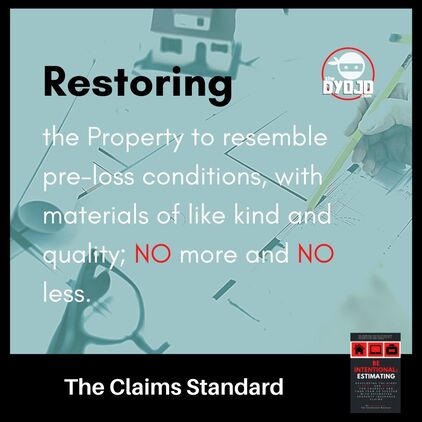
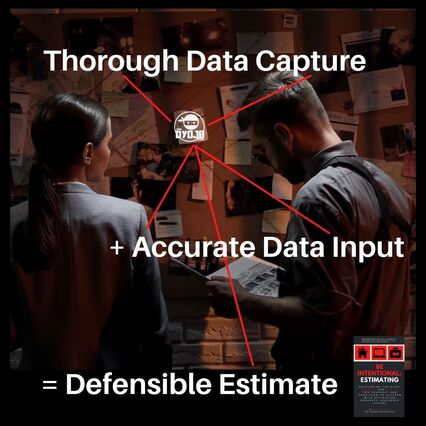
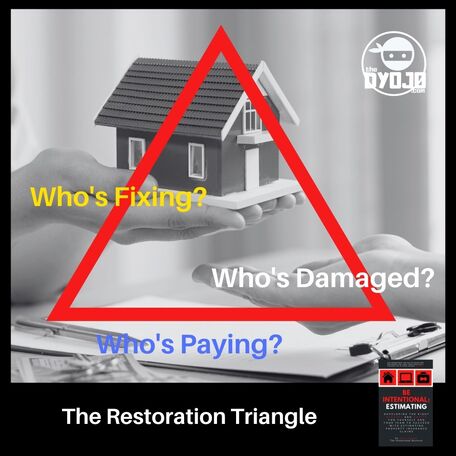
 RSS Feed
RSS Feed
